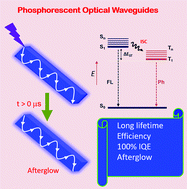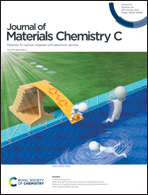Room-temperature phosphorescent organic materials for optical waveguides
Abstract
Organic optical waveguides (OWGs) are high refractive index one-dimensional molecular solids used to guide electromagnetic fields in a direction parallel to their long axis. OWGs have attracted a great deal of attention due to their possible applications in nanophotonics, optoelectronics and biology. The majority of OWGs studied hitherto employing organic molecules are fluorescent (FL) type. In contrast, OWGs built from room temperature phosphorescent (Ph) organic molecules have advantages like longer lifetimes (milliseconds to few hours) and 100% internal quantum efficiency over FL-OWGs. Nonetheless, due to their shortfalls like weak spin–orbit coupling and high sensitivity of triplet excitons under ambient conditions, Ph-OWGs are seldom reported. The solution to these problems is the appropriate design of Ph organic molecules and control of their solid-state arrangement. This review presents strategies for achieving room-temperature phosphorescence (RTPh) in organic molecules, viz. (i) physical approaches including H-aggregation, co-crystallisation and rigid-matrix host–guest complexation and (ii) chemical approaches employing distinct functional groups such as carbonyl or heteroatom or boron insertion, along with the intrinsic structure–property relationships and photophysical properties; and (iii) OWG applications of organic RTPh materials. In the end, this review will discuss the future outlook and opportunities of organic RTPh-OWGs.



 Please wait while we load your content...
Please wait while we load your content...